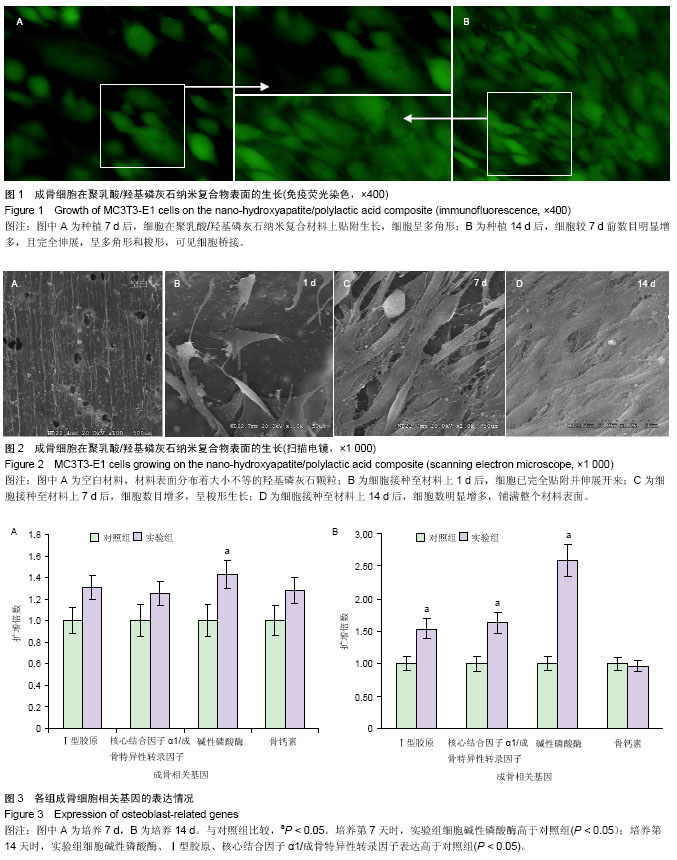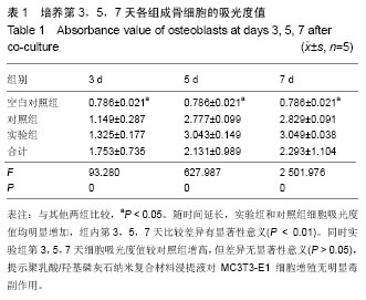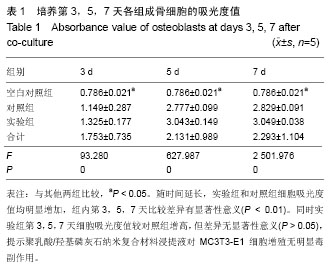| [1] 李敏,陈国奋,王健,等.长骨节段性缺损修复重建的理论及应用进展[J].中国组织工程研究,2013,17(43):7624-7629.
[2] Milla LA,Simpson AH.In vivo models of bone repair.J Bone Joint Surg Br.2012;94(7):865-874.
[3] Kolk A,Handschel J,Drescher W,et al,Current trends and future perspectives of bone substitute materials: from space holders to innovative biomaterials.J Craniomaxillofac Surg. 2012;40(8):706-718.
[4] 韩国伟,刘少喻,梁春祥,等.羟基磷灰石人工骨应用于MSCS后路手术的临床研究[J].中山大学学报:医学科学版, 2009,30(A4):83-85.
[5] Bohner M.Design of ceramic-based cements and putties for bone fraft substitution.Eur Cell Mater.2010;20:1-12.
[6] Hao W,Dong J,Etal JM,et al.Enhanced bone formation in large segmental radial defects by combining adipose- derived stem cells expressing bone morphogenetic protein 2 with nHA/RHLC/PLA scaffold.Int Orthop.2010;34(8): 1341-1349.
[7] Corrigan OI,Li X.Quantifying drug release from PLGA nanoparticulates. Eur JPharmSci.2009;37(3):477-485.
[8] Lee JH,Rim NG,Jung HS,et al.Control of osteogenic differentiation and mineralization of human mesenchymal stem cells on composite nanfibers containing poly lactic-co-(glycolic acid) and hudroxyapatite.Macromol Biosci. 2010;10(2):173-182.
[9] He J,Genetos DC,Leach JK.Osteogenesis and trophic factor secretion are influenced by the composition of hudroxyapatite/poly(lactic-co-glycolic) composite scaffolds. Tissue Eng Part A.2010;16(1):127-137.
[10] 刘冰,陈鹏.活性纳米羟基磷灰石复合胶原聚乳酸材料异位成骨性能研究[J].口腔颌面修 复学杂志,2009,10(4):193-196.
[11] 黄江鸿,王大平,刘建全,等.新型聚乳酸与纳米羟基磷灰石复合人工骨的性能测试研究[J].中国临床解剖杂志, 2012,30(3): 324-328.
[12] 黄福龙,戴红莲,方园,等.HA/PDLLA复合材料的制备及其降解性能研究[J].无机材料学报,2007,22(3):333-338.
[13] 姚芳莲,刘畅,孟继红,等.降解可控乳酸类聚合物[J].高分子通报, 2003,16(3):47-56.
[14] 张文志,王潇,段丽群,等.纳米羟基磷灰石/聚酰胺66复合人工椎体在颈椎病前路椎体次全切除术中的临床应用[J].中国骨与关节损伤杂志,2012,27(9):783-785.
[15] Ho ML,Fu YC,Wang GJ,et al.Controlled release cartier of BSA made by W/Q/W emulsion method containing PLGA and hydroxyap-atite.J Controlled Release.2008;128(2):142-148.
[16] 赵增辉,蒋电明.骨修复重建生物降解聚合材料研究现状与展望[J].中国修复重建外科杂志,2010,24(3):363
[17] 黄江鸿,王大平,刘建全,等.新型聚乳酸复合纳米羟基磷灰石人工骨的细胞相容性[J].实用骨科杂志,2012,18(4):323-326.
[18] Chen MN,Wei DP,Fan XJ,et al.Effect of Polylactic acid on the Proliferation and differentiation of osteoblast-like cell.Sichuan Da Xue Xue BaoYi Xue Ban.2005;36(6):839-842.
[19] Chung SH,Son SJ,Min J.The nanostructure effect on the adhesion and growth rates of epithelial cells with well-defined nanoporous alumina substrates. Nanotechnology. 2010;21: 125104.
[20] Hasegawa S,Neo M,Tamura J,et al.In vivo evaluation of a porous hydroxyapatite/poly-DL-lactide composite for bone tissue engineering. J Biomed Mater Res A. 2007;81(4): 930-938.
[21] Pincus Z,Theriott JA.Comparison of quantitative methods for cell-shape analysis. J Microsc.2007;22(Pt2):140-156.
[22] Andersson AS,Ba ckhed F,von Euler A,et al.Nanoscale features influence epithelial cell morphology and cytokine production.Biomaterials.2003;24:3427-3436.
[23] Sun J,Xiao W,Tang Y,et al.Biomimetic interpenetrating polymer network hydrogels based on methacrylated alginate and collagen for 3D pre-osteoblast spreading and osteogenic differentiation.Soft Matter.2012;8:2398-2404.
[24] Bettinger CJ,Langer R,Borenstein JT.Engineering substrate topography at the micro- and nanoscale to control cell function.Angew Chem Int Ed Engl.2009;48(30):5406-5415.
[25] Zheng XR,Zhang X.Microsystems for cellular force measurement: a review. Micromech Microeng. 2011;21: 054003.
[26] Yim EKF,Darling EM,Kulangara K,et al. Nanotopography- induced changes in focal adhesions, cytoskeletal organization, and mechanical properties of human mesenchymal stem cells. Biomaterials.2010;31:1299-1306.
[27] Knight DC,Eden JA.A review of the clinical effects of phytoestrogens.Obstet Gynecol.1996;87:897-904.
[28] Schofer MD,Veltum A,Theisen C,et al.Functionalisation of PLLA nanofiber scaffolds using a possible cooperative effect between collagen type I and BMP-2: impact on growth and osteogenic differentiation of human mesenchymal stem cells. J Mater Sci Mater Med.2011;22(7):1753-1762.
[29] Mahalingam CD,Datta T,Patil RV,et al.Mitogen-activated protein kinase phosphatase 1 regulates bone mass, osteoblast gene expression, and responsiveness to parathyroid hormone. Endocrinol.2011;211:145-156.
[30] Komori T.Signaling networks in RUNX2-dependent bone development.J Cell Biochem.2011;112(3):750-755. |



